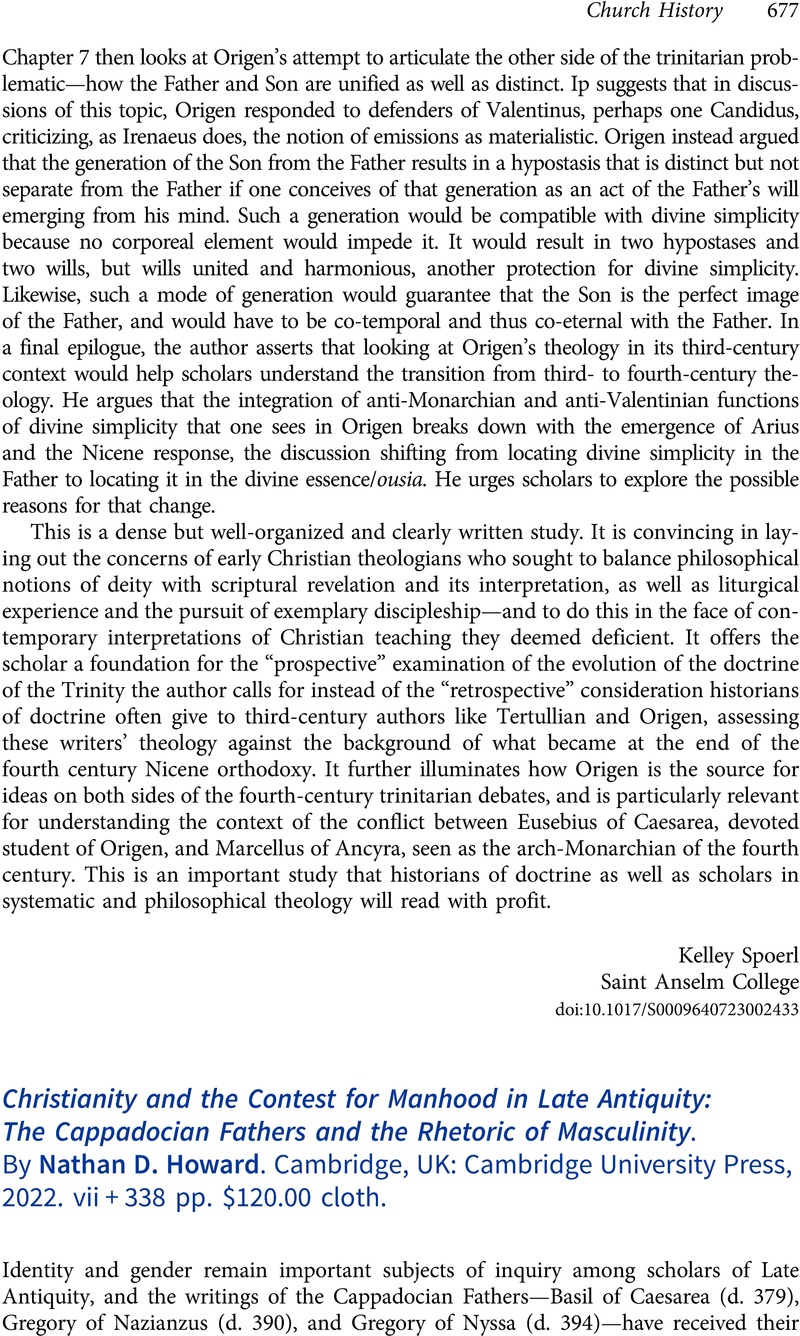No CrossRef data available.
Article contents
Christianity and the Contest for Manhood in Late Antiquity: The Cappadocian Fathers and the Rhetoric of Masculinity. By Nathan D. Howard. Cambridge, UK: Cambridge University Press, 2022. vii + 338 pp. $120.00 cloth.
Review products
Christianity and the Contest for Manhood in Late Antiquity: The Cappadocian Fathers and the Rhetoric of Masculinity. By Nathan D. Howard. Cambridge, UK: Cambridge University Press, 2022. vii + 338 pp. $120.00 cloth.
Published online by Cambridge University Press: 11 December 2023
Abstract
An abstract is not available for this content so a preview has been provided. Please use the Get access link above for information on how to access this content.

- Type
- Book Reviews and Notes
- Information
- Copyright
- Copyright © The Author(s), 2023. Published by Cambridge University Press on behalf of American Society of Church History


